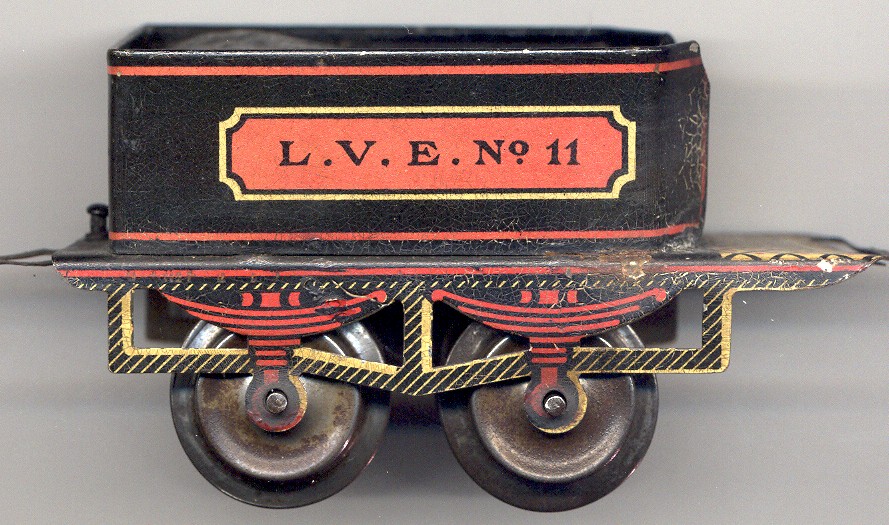
One of the earliest of the Lithographed L.V.E. No. 11 tender. This one is smooth sided and has an unusual 'red dot' lithograph on the platform (see below). Looking from the side above you can also see the unusual hatching on the frame and when compared against the later tenders below that the red litho board on the side is higher than the later tenders. We believe that this tender came only with 2 or 3 car sets that contained the rare white spring No. 50 cars. or other early tri-colored Iroquois Cars.
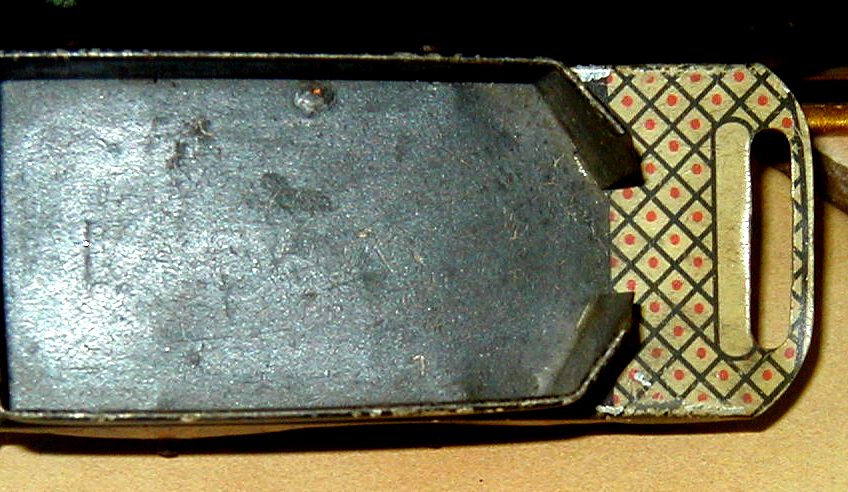
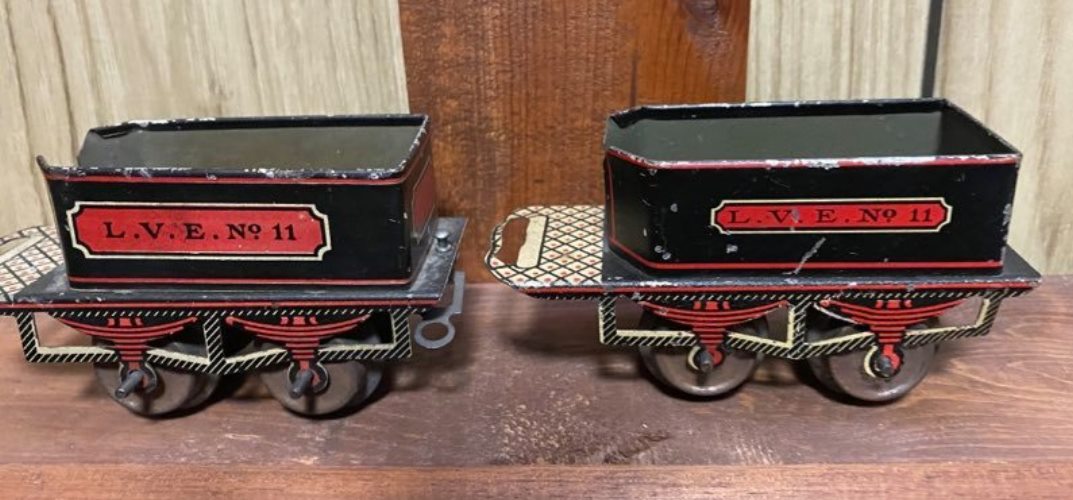
Here are two of the earliest LVE 11 tenders with the red dot top. Both of these are 1902-1903. Notice the one on the left has a larger frame around the lettering. The one on the left has a loop coupler and came with the early tri-colored Iroquois cars and was always found being pulled by a 2nd series 17, while the one on the right has just a pin to connect with Princess cars that have the long loop couplers. The one on the right would would go with a 2nd series 25 and has been found with cast iron wheels.
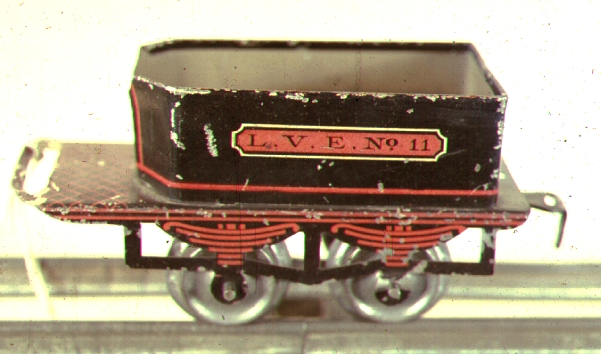
This one has the usual lithographed platform, but no litho on the connecting rods. It has a long hook coupler and smooth sides. These early L.V.E. No 11s came with the 6 band No. 25 Locomotives and some of the early series No. 17s.
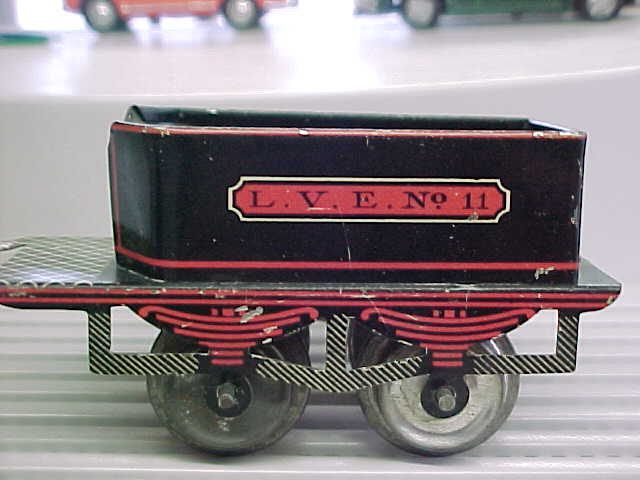
Circa 1904-07 - Smooth sides, full hatching to frame. Similar example below with loop coupler.

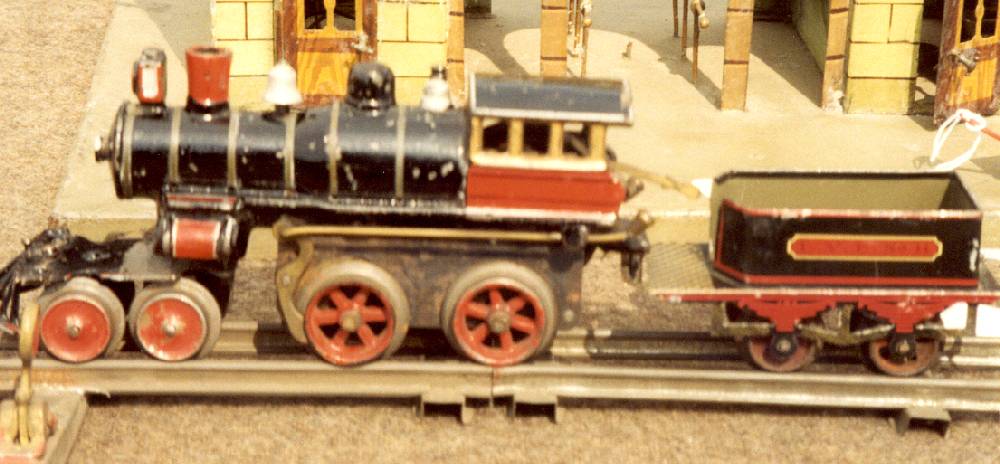
If I hadn't been so busy getting a picture of this engine I would have taken a better picture of the tender. This is the earliest lithographed No. 11 tender I've ever seen - it has cast iron wheels and the early long loop coupler.
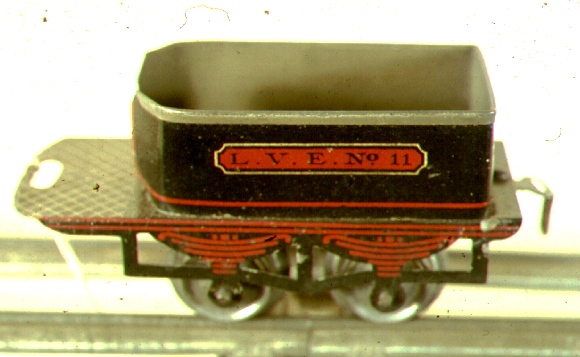
Circa 1908-09 This variation has a gold tinned inside that has been rolled over at the top to add a pretty gold highlight. You can tell this tender is from 1908 or later due to the small hook coupler but not to be confused with the early smooth sided LVE No. 11s it has hatching on the base and the gold top roll and red litho stripe.
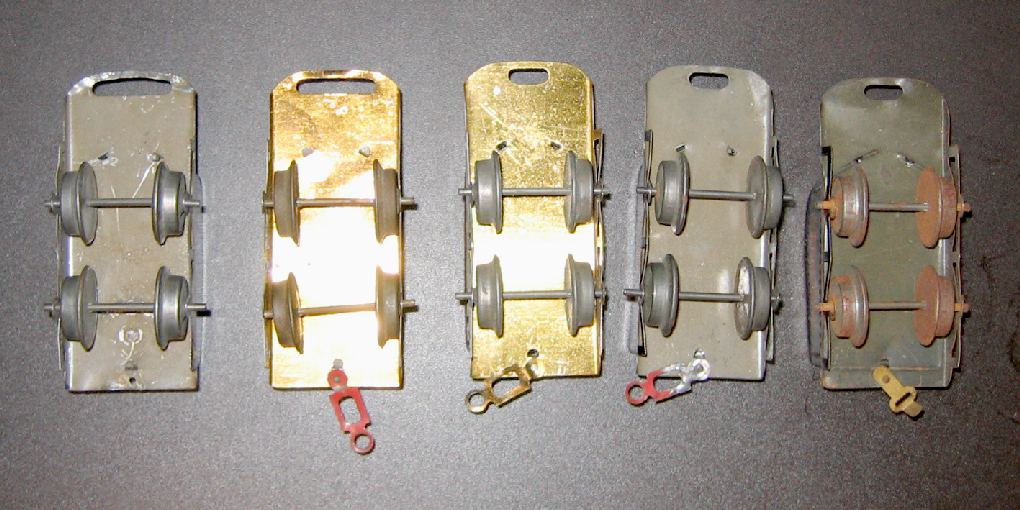
Dating these tenders is never easy, but look closely at the 5 tenders above from the bottom. Note the example on the right has an embossed ridge on the bottom where the tender top sits on the frame and where the tabs are punched through. This re-enforcing denotes a later tender (circa 1907 and later). The two tenders on the left have a larger slot punched in them for the engine post. This is an early feature and usually dates the tender to 1904 or earlier. The 2nd and 3rd tender have the shinny tin bottom, similar to the bottoms of Mohawk cars, we feel this shinny tin feature dates circa 1903-1905. The 4th tender above is probably circa 1905-06 as it has the smaller slot, non-shinny bottom and no embossed ridges. Below are the same 5 tenders from the tops, not much difference here. The one has white hatching, but this is also found in later tenders with smaller slots. Note that the one on the left has a coupler rivet inside the tender shell instead of at the end as the other 4 do. This rivet is for the larger hook coupler that would have been used for the Princess or Inboard cars. The other four have loop or hook couplers for the smaller 50 series cars.
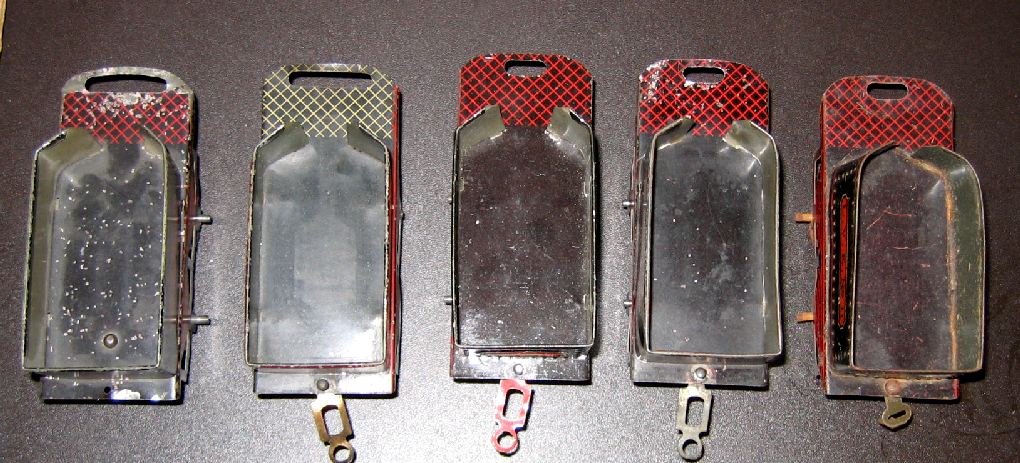
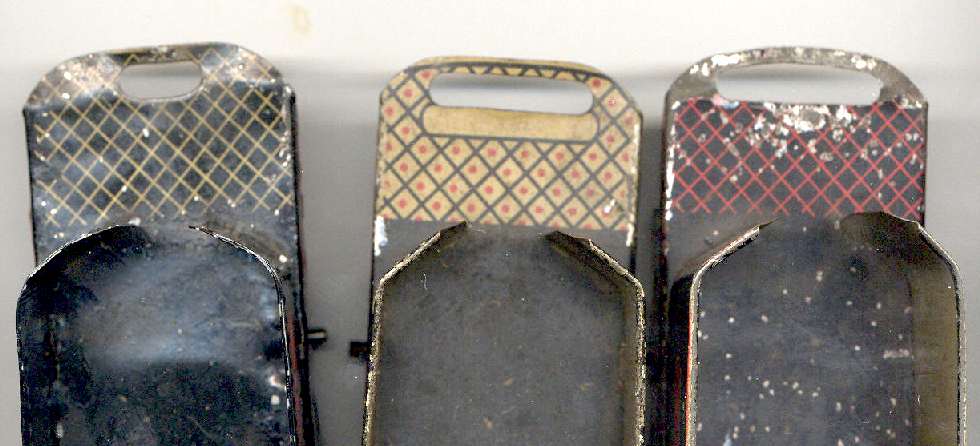
Close look at the three different kinds of hatching found on the tender floors. All three of these tenders are early but the two on the right pre-date the one on the left with their larger slots.
| O Gauge | Locomotives | Passenger | Freight | Trolleys |
| Wide Gauge | Boats | Boxes | Specials | Index |
| One Gauge | Catalogs | Accessories | Wiring | Factory |